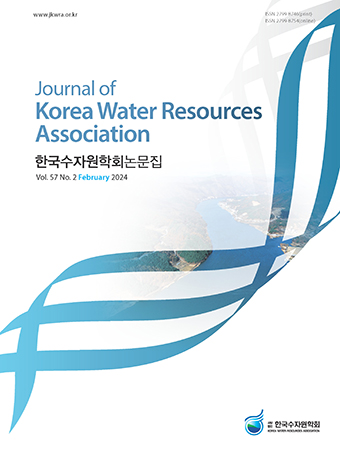Research Article
Abstract
References
Information
Hussin, H.Y., Quan Luna, B., van Westen, C.J., Christen, M., Malet, J.-P., and van Asch, T.W.J. (2012). "Parameterization of a numerical 2-D debris flow model with entrainment: A case study of the Faucon catchment, Southern French Alps." Natural Hazards and Earth System Sciences, EGU, Vol. 12, No.10, pp. 3075-3090.
10.5194/nhess-12-3075-2012Kim, M., Kim, J., Cho, Y., and Kim, S. (2011). "Geomorphic-characteristics of debris flow induced by typhoon "RUSA" in 2002 using Shalstab model and remote sensing: Case study in Macheon region near Jiri-Mountain." Journal of the Korean Geomorphological Association, KGA, Vol. 18, No. 4, pp. 193-202.
Pastor, M., Blanc, T., and Pastor, M.J. (2009). "A depth-integrated viscoplastic model for dilatant saturated cohesive-frictional fluidized mixtures: Application to fast catastrophic landslides." Journal of non-Newtonian fluid mechanics, Elsevier, Vol. 158, No. 1-3, pp. 142-153.
10.1016/j.jnnfm.2008.07.014- Publisher :KOREA WATER RESOURECES ASSOCIATION
- Publisher(Ko) :한국수자원학회
- Journal Title :Journal of Korea Water Resources Association
- Journal Title(Ko) :한국수자원학회 논문집
- Volume : 53
- No :9
- Pages :637-646
- Received Date : 2020-06-09
- Revised Date : 2020-07-08
- Accepted Date : 2020-07-08
- DOI :https://doi.org/10.3741/JKWRA.2020.53.9.637




 Journal of Korea Water Resources Association
Journal of Korea Water Resources Association










